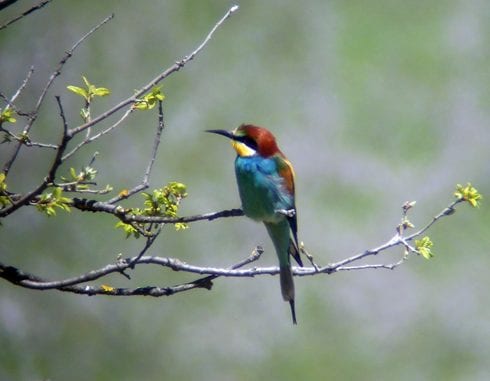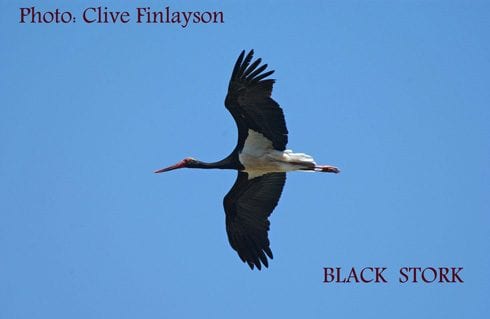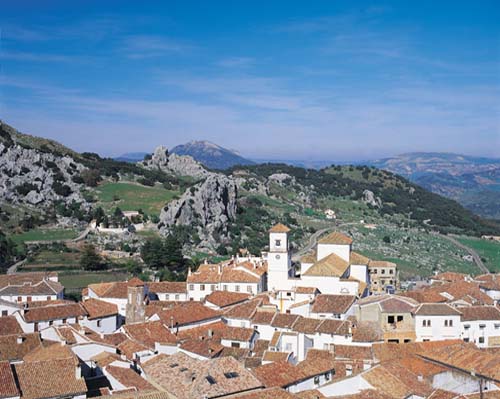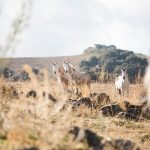SUMMER is here in the south of Spain. The weather will soon be too hot for very long strenuous walks but that doesn´t mean that nature escapades have to stop. How about spending a couple of hours in a beautiful spot near the river, or on a mountain meadow where you can “play Gulliver”, looking at the Lilliput world of insects? Being stationary enables you to be more attentive and can result in exciting discoveries. Health warning: insect-watching can be surprisingly addictive!
A small digital camera is good enough for this adventure; you do not need a dedicated macro lens to end up with usable images of small creatures. A notebook is useful for noting down where you found the animal or anything special about its behaviour, a tape measure will be needed to place next to your subject when taking a photograph. You can also use a coin or place your finger next to the creature. A magnifying glass can also be useful. Binoculars are very handy for appreciating butterflies and dragonflies without them flying off. If your binoculars seem not to focus correctly on an insect, you need to take a few steps back as each brand´s close-focusing point can vary. A naturalist chasing after butterflies with a net is an outdated and, let´s admit, a slightly undignified image. Also, nowadays nature lovers tend to be as little invasive as possible. Damaging or disturbing what you observe is out of the question, especially as most “studies” are conducted for pleasure, not science.
A beach parasol and a blanket will make you more comfortable. Stash your gear under the parasol and start scouting around your site. Once you discover what kind of tiny animals the site can offer, you can concentrate on trying to photograph the ones that look most interesting to you.
The Lilliput world is normally hidden from our eyes. It is hard to pay attention to what´s going on under our feet as we go about our everyday tasks in the “big” world. Changing perspective requires a bit of patience while your senses adjust and start registering the small and the ephemeral. Some people understandably shudder at the word “insects” as wasps, flies and cockroaches come to mind, and I agree it is a bit hard to love a cockroach. However, challenging our innate weariness of “bugs” can open the door to a fascinating new world. One can start with the easy-to-love members of the Insect class of the animal kingdom such as butterflies, dragonflies and damselflies and the many species of elegant shiny beetles. There are about a million described insect species on our planet. Today, let´s start with just three.
Giant Peacock Month (Latin: Saturnia Pyri, Spanish: Gran Pavón)
This handsome animal is the biggest moth in Europe with a wingspan of 15cm! It flies at night but can be observed on warm evenings as well. Unlike its caterpillar form, the moth does not eat at all. Its purpose is just to reproduce. Because of that, its life span of the moth is only up to one week. During that week, the female will try to attract the male by exuding pheromones which can travel as far as 20 km. These beautiful giant months used to be a common sight in Andalucía. However, the use of chemicals in vegetable gardens and fields has contributed to its decline. This moth was photographed in Montejaque in the middle of the street, when it was probably finishing its short stretch of life as a moth, slowing down and not flying off, the wing visibly damaged – maybe after an encounter with a bird or a cat.
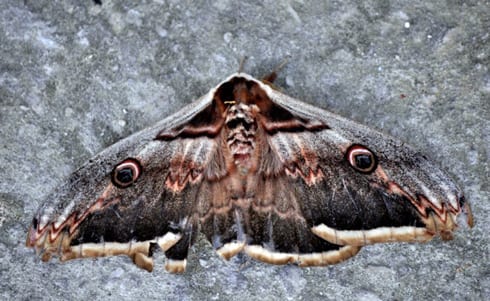
Spanish Festoon (Latin: Zerynthia rumina. Spanish: Arlequín)
This beautiful butterfly is native only to the Iberian Peninsula, South of France and North Africa. The Zerynthia found in Provence can belong to a slightly different species, additionally sporting bluish dots but without clearly-marked red dots on the forewing. “Our” Spanish festoon has a yellow, red and black pattern and its wingspan reaches almost up to 5 cm. The caterpillar of the Spanish Festoon feeds on plants from the Aristolochia family such as Dutchman´s Pipe, and absorbs the poisonous chemicals which are then used as a form of defence against predators.
Butterflies in general can fly one, two or many different times of the year, depending on their life-cycle, climate or food abundance. In our area the Spanish Festoon is normally present in between early March and beginning of June, but a second brood can appear from August to October.
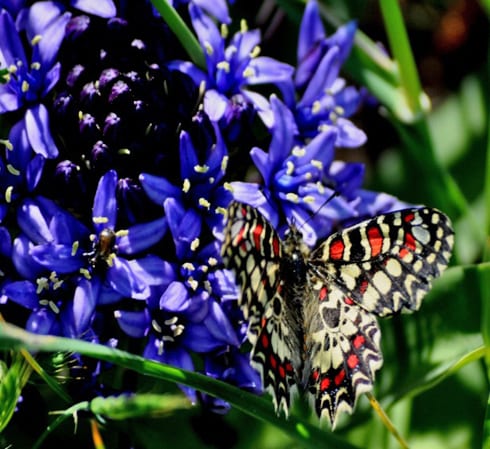
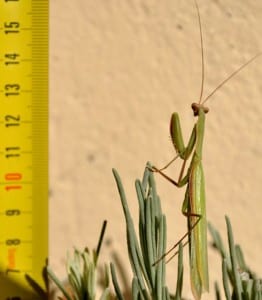
Praying mantis (Latin: Mantis religiosa. Spanish: Mantis religiosa, Santateresa)
This is one of my favourite insects and can be found anywhere including parks and gardens. The Praying Mantis is a ferocious predator which hunts anything that can be caught and devoured – mostly other insects, but also lizards or even rodents! Many gardeners like to encourage the Praying Mantis into their gardens for natural pest control. The Praying Mantis, like all predators, is intelligent and observant. Its flexible head can turn easily and it will actually follow you intently with its curious, alien-like eyes. The Praying Mantis has acute binocular vision which it relies on when hunting. Mantises remain immobile and camouflaged in foliage when they hunt. Their folded spiky forelegs, which give them the popular name of “Praying”, act as powerful forceps used to grab the prey.
Note: There is a quite rare Iberian species of Praying Mantis, considered nearly threatened and protected by law. The Apteromantis aptera is found in, amongst other areas, our part of Andalucía, in Málaga and Cádiz provinces. This mantis is small, flightless and has startling, pointy, angular eyes.

Handling and photographing insects
Long gone are the days when sticking butterflies on a pin was considered cool. Also, even gentlest attempt at handling butterflies will damage their delicate wings. Nowadays, a good photo technique is something to be admired. Butterfly photographers know how to attract these creatures using over-ripe fruit or sugar water and using a small, soft brush to transfer them gently onto chosen plant to be photographed. However, if you are patient and do not make sudden movements, butterflies will settle down around you. Approaching them from the back rather than from the side seems to work well. Take pictures as you approach slowly: this way when they do eventually fly off, you will already have a few images.
Mantises on the other hand look tough, but we are still much bigger and stronger than they are. Be gentle. Mantises are not venomous or dangerous to humans in any way. The spiky arms, however, can be a bit sharp and it´s best not to touch them. There is little reason to handle the Mantis as it will normally stay immobile when you take a photograph as it pretends to be part of the vegetation swaying gently in the wind.
How to ID your findings
Understandably, not everyone wants to invest in dedicated field guides. If you do, a good tip is to pay attention to the distribution maps as very similar species can inhabit different parts of Europe. Do not forget to check the size of your insect and the habitat where you found it.
If you do not have a field guide, post your picture on a social network, flickr.com, or any other website with public access: normally you find fellow nature lovers to share their ideas with you.
The best local resource for nature of Grazalema Natural Park is the Grazalema Information Centre run by Clive Muir with a focus on wildlife, walking and local products. Besides the information centre and the shop, there is an art gallery and an authentic, restored and working flour mill (you can buy the flour which is 100% natural). The centre is a goldmine for nature lovers and walkers, and offers a great collection of wildlife books, artwork and postcards. The book on bats I bought there recently is keeping me very busy! Here are a couple of links to the Grazalema Guide and Wildside Holidays, where insects are described beautifully.
- http://www.grazalemaguide.com/nature-news/38-creepy-crawlies/87-impressive-insects-on-the-wing-in-june.html
- http://www.wildsideholidays.com/natural/insects-and-creepy-crawlies.html
Good luck on your Gulliver travels in Spain.



